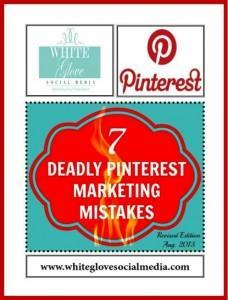 If you’re using Pinterest for business, you’re likely interested in doing it in a manner that produces the best results. Are you thinking about how you can entice others to repin your images, how to build your follower base and how to use Pinterest to drive brand awareness and traffic to your website?
If you’re using Pinterest for business, you’re likely interested in doing it in a manner that produces the best results. Are you thinking about how you can entice others to repin your images, how to build your follower base and how to use Pinterest to drive brand awareness and traffic to your website?
Hopefully you’re tying your efforts on Pinterest to your business efforts as a whole and integrating it with your other marketing objectives. My business focuses almost exclusively on best practices when it comes to Pinterest, which led me to develop this post on the 7 Deadly Pinterest Marketing Mistakes and how to avoid them. Here goes:
1. Not Posting Often Enough
Consistency is important. Not pinning enough is the deadly sin I see most often. Worse – I see Pinterest pages that haven’t been updated in months. If it’s the Christmas season and you have a Valentine’s Day board featured, it doesn’t speak much to you as a credible brand—and a credible Pinterest user.
We recommend pinning content to your Pinterest boards (on average) five times per day. And before you get overwhelmed, know there are some great automation tools that can help you schedule your pins.
2. Not Posting Enough Quality Content
Your Pinterest page is not there so that you can continually blast out your messaging or show off your products and services. It’s not a product brochure (check out the photo below, which is an example of a Pinterest account that features only products—yikes!). Like any other social media channel, Pinterest should not be treated as a place to continually push out your brand message. Instead, Pinterest is all about finding creative and indirect ways to position your products and services in ways that not only showcase your products, but which also provide some form of inspiration or educational value to your customers and prospective customers.
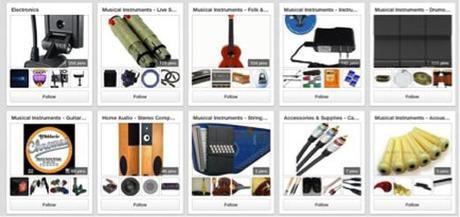
We see many Pinterest accounts pin images exclusively about their company. The approach these brands are taking is pretty much akin to saying “It’s all about us and how great we are.” Nobody likes that—and sooner or later, these brands will figure out why their boards have little traffic, repins or interest from the Pinterest community.
The key to winning the hearts of your potential customers is to offer value. Ask yourself:
- Who are my customers?
- What do they need and want?
- What solutions can I offer to help them solve their concerns or problems?
Keep the above in mind and try to create your Pinterest boards so that they’re comprised of 20% marketing messages and 80% educational, informative, fun and helpful tips and ideas. Your community will reward you for that customer-centric approach.
3. Not Having a High Quality Profile Picture
Just like on any other social network, your Pinterest profile picture is your chance to make a statement about who you are. Make sure your profile picture is interesting, in focus and puts your brand’s best foot forward.

Put it this way – would you go to a shop where the window dressing is dirty, the products they are showing in the casings are in disarray or poorly merchandised, or worse—empty because the shop owner is too busy reading her magazine behind the counter? Probably not. First impressions in business are everything. You have one chance to make that lasting impression. Take advantage of this on Pinterest and put that 165×165 pixel profile picture box to work for you and your brand. Do this before you pin—you’ll be glad you did.
4. Failing to Engage Other Pinterest Users
Make sure you remember that Pinterest is essentially a visual social network. It’s a good idea that, when someone has commented, repined, liked or shared your pin, you acknowledge that activity. One of your likely goals when it comes to Pinterest is to build followers, which means building relationships. Engaging those folks who interact with your content is one of the best (and easiest) ways to do just that. Here’s how you can make the process of engaging with your Pinterest community as easy as 1-2-3:
1) Go to your “SETTINGS” tab
2) Switch all the tabs to YES (see image below)
3) Choose “Once a day at most” under “How Often”. Pinterest will send you an email showing you all the pinners that engaged with you.

And if you want to make sure you commit time to the process of building your network and followers on Pinterest, go to your calendar and commit 15 minutes a day to acknowledge those pinners who are showing up in those daily emails from Pinterest.
5. No Board Descriptions
Sounds crazy, I know, but many Pinterest users have overlooked the importance of having board descriptions on their Pinterest boards. Pinterest allows you up to 500 characters for each board description and this is your chance to show other pinners (and your customers and prospects) your personality through your writing style. In addition, take advantage of keywords to increase the SEO value of your Pinterest boards, which also increases your chances of being found. This is something that’ll likely take you no time at all, but that can have a big impact on your success when it comes to Pinterest. Here’s what that looks like:
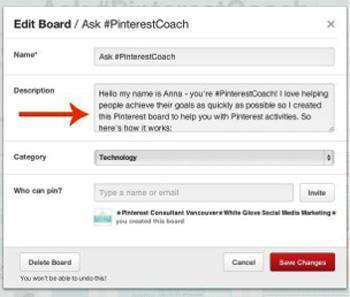
Another common mistake we see on a regular basis is failing to complete the “category” section of your Pinterest boards. If you leave that blank, Pinterest users won’t find your board through search. Look at how Pinterest lets you choose how to find boards when you’re searching for something:
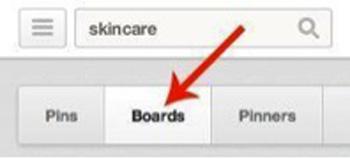
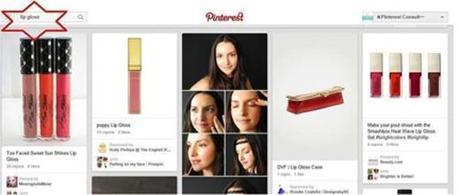
When you’re searching for something like “lip gloss” (as pictured above), the Pinterest search engine searches all boards and delivers results much like Google does, based on keywords.
Not only do keyword-rich board descriptions help increase your chances of discovery on Pinterest; having a well-optimized presence on Pinterest can help your brand when it comes to overall search engine results, too. Your Pinterest page might likely appear when someone is searching for something you cover on one of your boards, giving you a chance to increase your overall digital footprint.
Here are some important elements to include in your Pinterest Board description:
1. Describe what the board is about (even if it’s obvious) because you want to use relevant keywords.
2. Include a statement about why someone should follow this board (so they’ll know what they can expect from you).
3. Be interesting. Use this opportunity to give people a sense of your brand personality.
6. No Company Website
We all know how generating traffic to our website is crucial to ranking high in the search engines, especially Google, but sometimes brands using Pinterest forget about this. When creating your presence on Pinterest, make it easy for users to find you by making sure you add your website URL (see image below) under the “About” section of your Pinterest page.

In addition, make sure you verify your website so that you can take advantage of the Pinterest analytics that Pinterest provides. Verifying your website also guarantees pinners that your account is the legitimate account for your business and not just a copycat.
It’s always interesting to me when large brands haven’t yet taken this step to verify their Pinterest account and protect their image. Coca-Cola is one of them, as you can tell from the image below.

Conversely, as you can see by looking at Starbucks’ Pinterest page, this account is verified. Another small step that can ultimately be a big deal.

7. Not Enough Images on a Board
Anyone who uses Pinterest on a regular basis can tell a poseur from a brand that’s really engaged on Pinterest. When we see boards that either have one image or blank boards, it’s pretty clear that Pinterest is an afterthought. Kind of like a Twitter account with once-a-month tweets of spammy, brand-focused content. Not very compelling, is it? And probably not a Pinterest account you’re likely to care enough about to follow.
Whether you’re a B2B or a B2C brand, if you’re going to use Pinterest with the hope of having any impact on your overall digital marketing efforts, make sure the boards you’re creating are filled with a wide variety of different images and are interesting, informative and worth someone spending their time to look at and engage with. Make sure they add value of some kind. Having a presence on Pinterest that looks like this—probably not going to deliver much in the way of results.
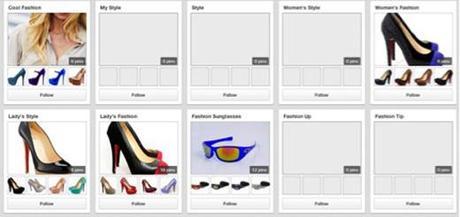
Remember, if you’re using Pinterest, before you get started, think about why you’re doing it. Most likely, you’re interested in using Pinterest to:
- Build followers, so that you can;
- Get more traffic to your corporate website, so that you can;
- Sell more stuff to more people.
If you make sure you avoid some of the mistakes set out above, chances are good you’ll achieve your objective and that Pinterest will play a role in your overall integrated marketing efforts. So there you have it! Avoid these Pinterest marketing mistakes on your page. If you’ve made some of these deadly mistakes, don’t worry—you can still redeem yourself by going back and doing it right today.
Want to know more? Here are some great posts on using Pinterest for business that you should check out:
3 Unique Ways to Use Pinterest for Business (Social Media Examiner)
The Ultimate Guide to Pinterest for Every Brand (Forbes)
Why and How You Should Be On Pinterest (Shopify)
 Anna Bennett is a certified Social Media Marketing Strategist and principle of White Glove Social Media Marketing. She is a Pinterest expert and helped her first client surpass its competition on Pinterest in less than 90 days.
Anna Bennett is a certified Social Media Marketing Strategist and principle of White Glove Social Media Marketing. She is a Pinterest expert and helped her first client surpass its competition on Pinterest in less than 90 days.
Her first Facebook project attracted over 1,200 followers to her local foodie group, which she then leveraged to sell out restaurant events. Anna is an avid tennis player and golfer, a crafty home decorator and health nut. She can be contacted at [email protected] and followed on Pinterest.
7 Deadly Pinterest Marketing Mistakes To Avoid is a post from: V3 Kansas City Integrated Marketing and Social Media Agency

